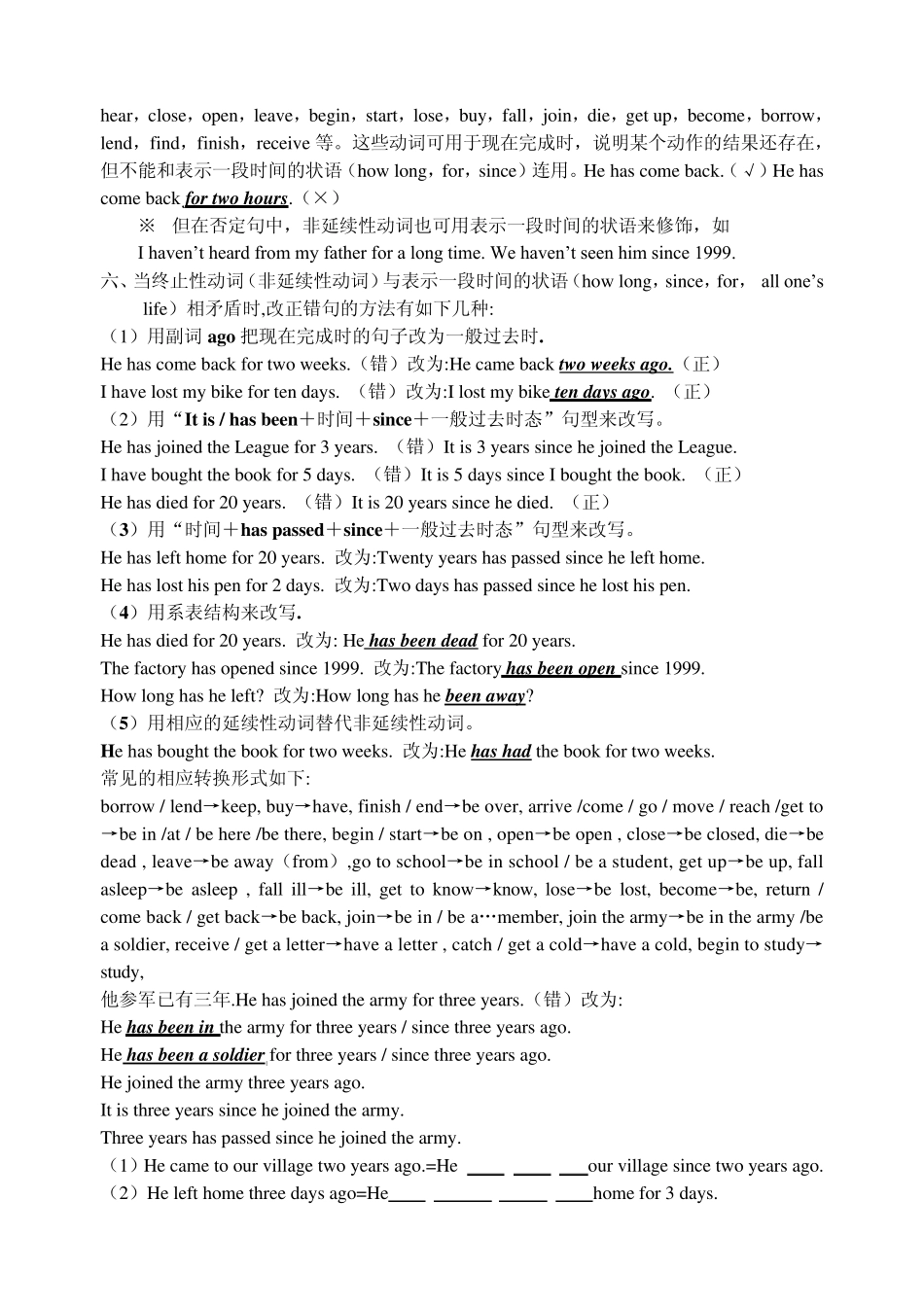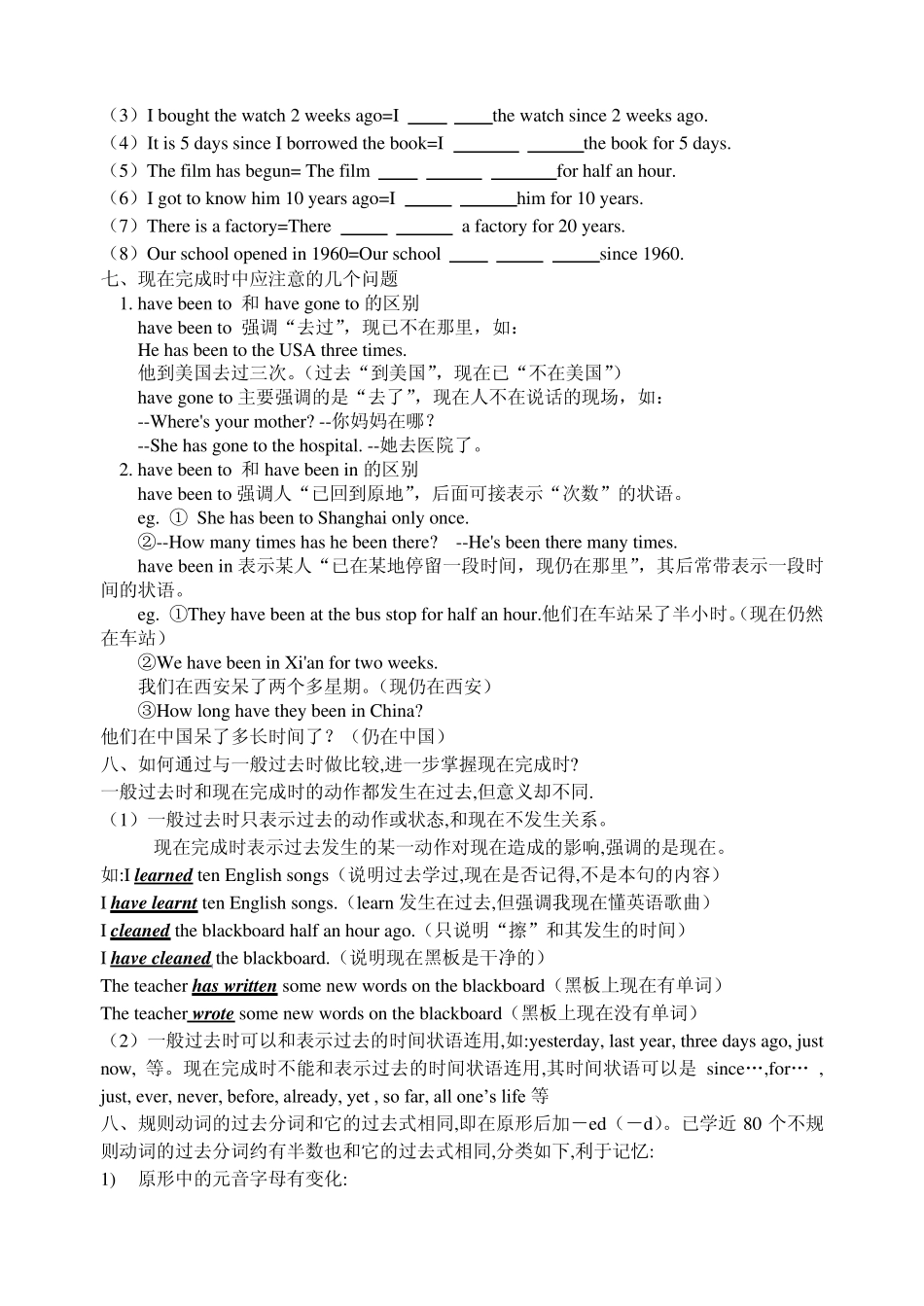8B Unit 1 Past and present Grammar 现在完成时 现在完成时用来表示之前已发生或完成的动作或状态,但它的影响现在还存在;也可表示持续到现在的动作或状态。其构成: have (has) +过去分词。规则变化的过去分词与过去式的变化一样,在动词词尾加 ed; 不规则变化的过去分词见不规则动词表,需要同学记忆。 现以 see the film 为例将现在完成时的肯定句, 否定句和疑问句列表如下: 肯定句:I/You/We/They have seen the film. He/She /It has seen the film. 否定句:I/You/We/They have not/ haven’t seen the film. He/ She/It has not/hasn’t seen the film. 疑问句:Have I/you/they seen the film? Yes, you/ we/I/they have. No, you/ we/I/they haven’t. Has he/she/it seen the film? Yes, he/ she/ it has. No, he/ she/ it hasn’t. 二、用法:现在完成时既涉及过去,又联系现在。用法一:表示过去发生或已经完成的某一动作对现在造成的影响或结果。常与 just(刚刚),already(已经),never(从来没有),ever(曾经),before(以前),yet(仍然),once(一次),twice(两次),many times(很多次),how many times(多少次),so far(迄今为止),during the past(last)three years(最近三年来)等连用。 ※ 副词的位置:①just 常用于肯定句中,放在 have / has 后,He has just come . ②never 表示否定, 放在 have / has 后, He has never visited the Great Wall. ③ever 用于疑问句中,句型为: Have / Has+主语+ever +过去分词?“„曾经„„过吗?”用于询问某人过去的经历。Have you ever been to the farm? ④before 用于句末,The woman has never heard of that before. ⑤yet 用于句末或 not 之后.Has the train arrived yet? No, not yet. ⑥already用于肯定句, have / has 之后或句末.We have already finished it. ⑦so far 用于句首或句末. So far, we have visited the moon. 用法二:表示过去已经开始,一直延续到现在的动作或状态。时间状语有: ① for+表示一段时间的词语 I have taught English for 19 years。 ② since+表示过去时间点的词语 He has been at this school since 1986. ③ since+表...


